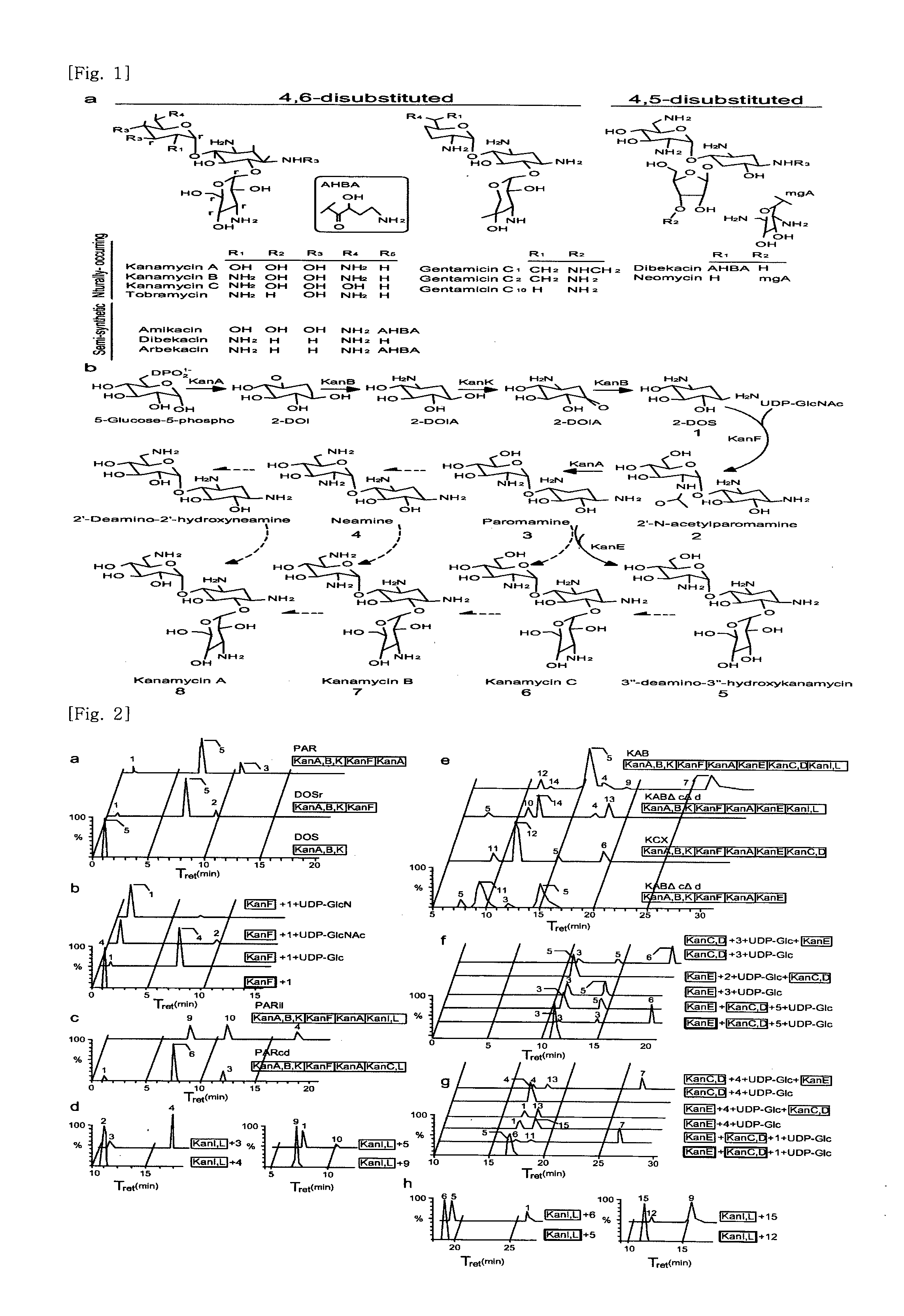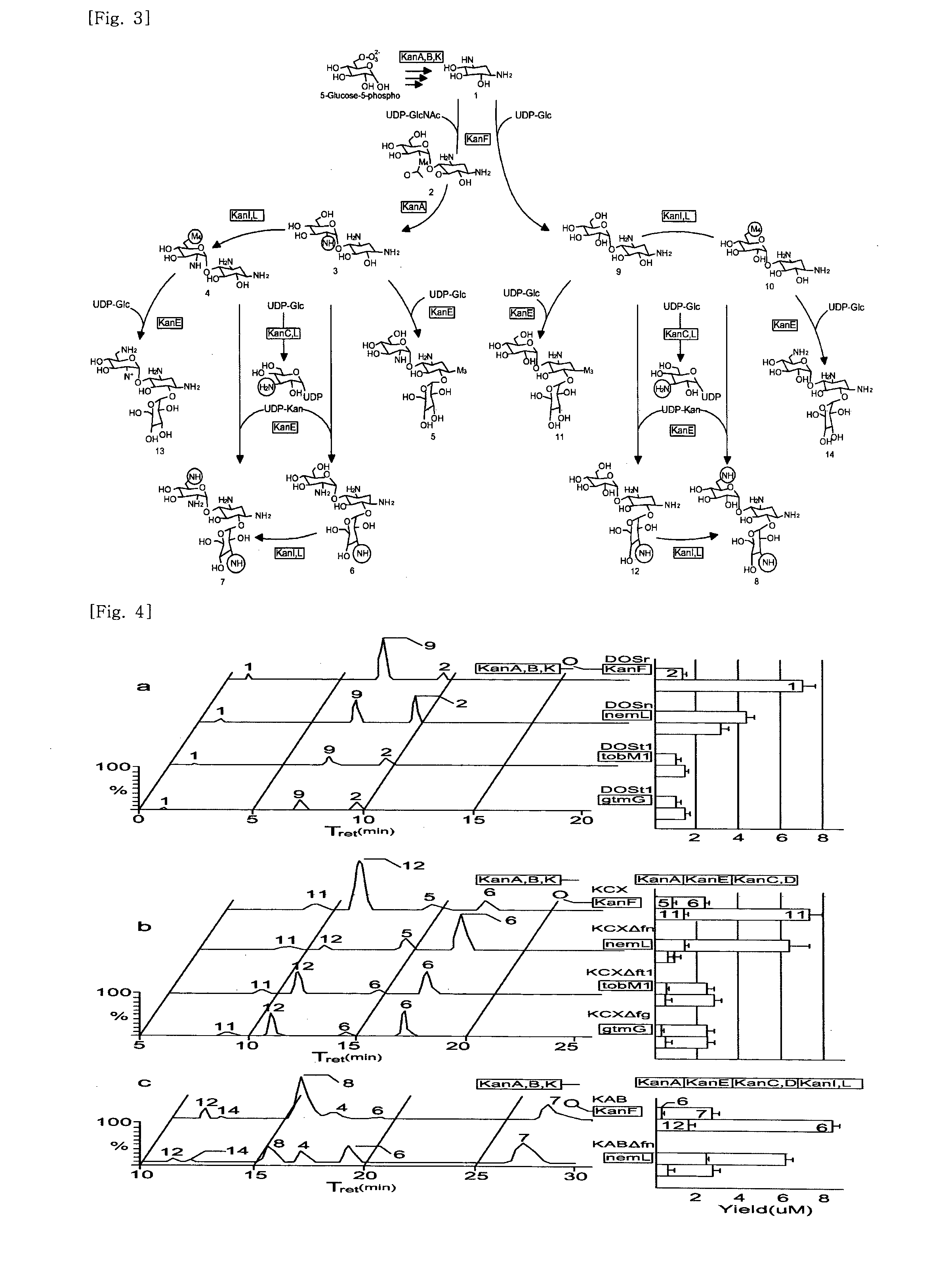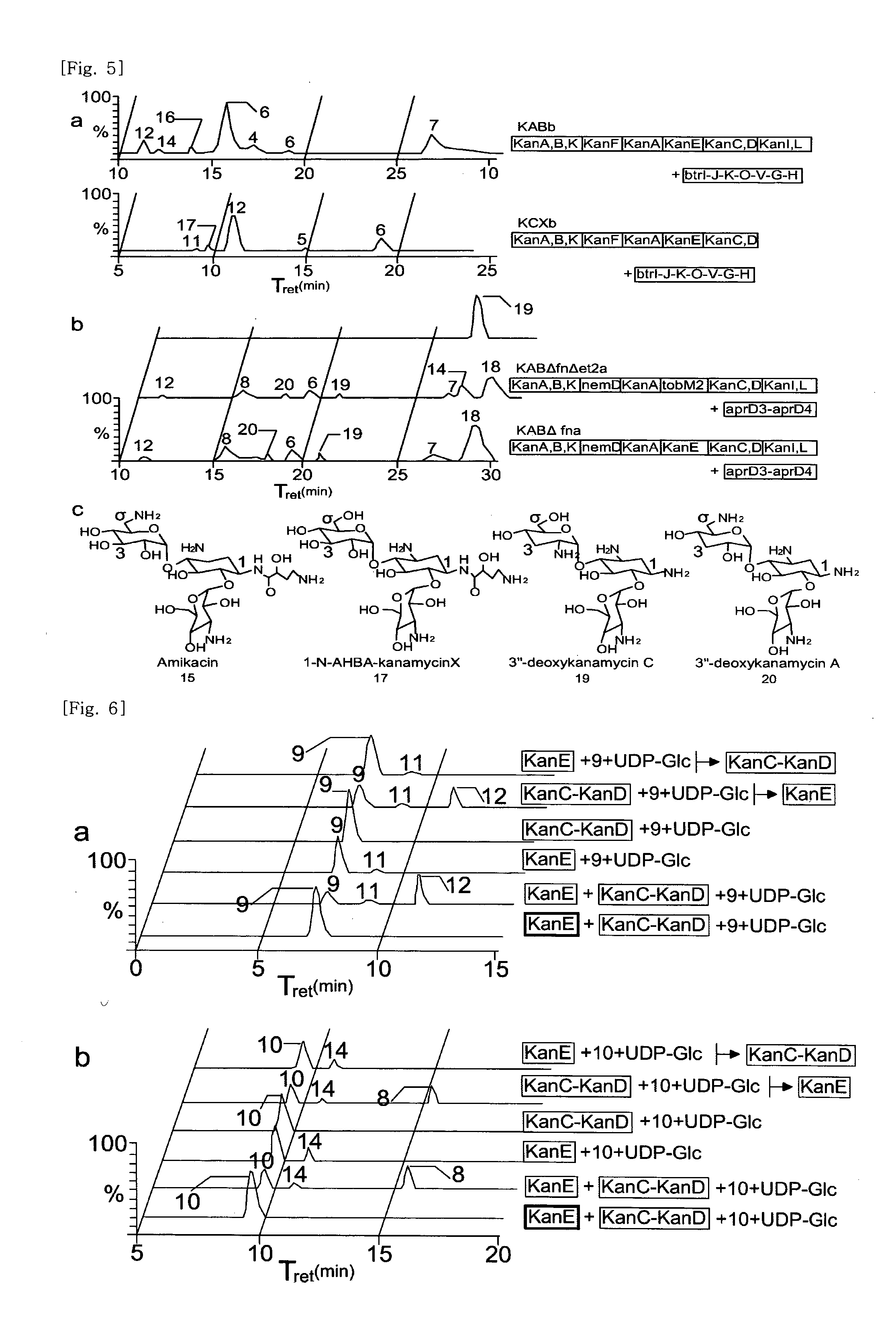New kanamycin compound, kanamycin-producing streptomyces species bacterium, and method of producing kanamycin
- Summary
- Abstract
- Description
- Claims
- Application Information
AI Technical Summary
Benefits of technology
Problems solved by technology
Method used
Image
Examples
example 1
Preparation of Materials
[0131]Standard kanamycin, kanamycin B, neomycin, paromomycin, tobramycin, and amikacin were purchased from Sigma (USA). 2-mercaptoethanol, phenylmethylsulfonyl fluoride (PMSF), phenol / chloroform / isoamyl alcohol (25:24:1), uridine 5′-diphospho-D-glucose (UDP-Glc), and glass beads (150 to 212 μm) were also purchased from Sigma. Heptafluorobutyric acid (HFBA) was obtained from Fluka, and HPLC-grade acetonitrile, methanol, and water were obtained from J. T. Baker. 2-deoxystreptamine (2-DOS, compound 1) and UDP-2-N-acetyl-D-glucosamine (UDP-GlcNAc) were purchased from GeneChem (Republic of Korea). Cation solid-phase exchanger (OASIS MXC SPE, 3 mL / 60 mg) and vacuum manifold were purchased from Waters. The culture medium components, soybean meal, yeast extract, and malt extract were acquired from BD Science (USA).
[0132]Paromamine and neamine were prepared from paromomycin and neomycin, respectively, by methanolysis. UDP-2-D-glucosamine (UDP-GlcN) was prepared by enz...
example 2
Culture of strains
[0133]The recombinant strains of S. venezuelae were grown in liquid R2YE at 30° C. for preparation of protoplasts, which were regenerated on R2YE agar medium supplemented with thiostrepton (30 μg / ml). The E. coli strains used for subcloning were grown in LB medium supplemented with ampicillin (50 μg / ml) to select for plasmids.
[0134]For production of kanamycin biosynthetic intermediates and their analogs, S. venezuelae strains expressing the biosynthetic candidate genes were cultivated at 30° C. for 4 days in one liter of baffled Erlenmeyer flasks containing 300 mL of R2YE medium supplemented with thiostrepton (25 μg / ml). S. kanamyceticus ATCC 12853 was grown at 30° C. for 5 days in liquid ISP2 (0.4% yeast extract, 1.0% malt extract, and 0.4% glucose), and S. tenebrarius ATCC 17920 was grown at 30° C. for 5 days in fermentation medium (2.0% glucose, 2.0% soluble starch, 4.0% soybean meal, 0.5% yeast extract, 0.5% CaCO3, and 0.4% MgSO47H2O, pH 7.0).
[0135]To check the...
example 3
Cloning and Construction of Expression Plasmids and Recombinant S. Venezuelae Strains
[0136]An engineered strain of S. venezuelae, which is deficient in biosynthesis of the endogenous deoxysugar thymidine 5′-diphospho (TDP)-D-desosamine, was used as a heterologous host. A gene replacement plasmid, pYJ188, was introduced into protoplasts of S. venezuelae YJ003 mutant for deletion of the kanamycin modifying gene (aphII) by a replicative plasmid-mediated homologous recombination. Several double crossover mutants were identified on the basis of their phenotypes of kanamycin sensitivity and their genotypes by Southern hybridization.
[0137]DNA fragments containing a variety of kanamycin biosynthetic genes were amplified from pSKC2 by PCR with specific deoxyoligonucleotide primers (See table 1). The DNA fragments encoding NemD, GtmG, AprD3, AprD4, TobM1, and TobM2 were obtained by PCR-amplification using genomic DNA of S. fradiae ATCC 10745, Micromonospora echinospora ATCC 15385, and S. tene...
PUM
| Property | Measurement | Unit |
|---|---|---|
| Power | aaaaa | aaaaa |
| Density | aaaaa | aaaaa |
| Density | aaaaa | aaaaa |
Abstract
Description
Claims
Application Information
 Login to View More
Login to View More - R&D
- Intellectual Property
- Life Sciences
- Materials
- Tech Scout
- Unparalleled Data Quality
- Higher Quality Content
- 60% Fewer Hallucinations
Browse by: Latest US Patents, China's latest patents, Technical Efficacy Thesaurus, Application Domain, Technology Topic, Popular Technical Reports.
© 2025 PatSnap. All rights reserved.Legal|Privacy policy|Modern Slavery Act Transparency Statement|Sitemap|About US| Contact US: help@patsnap.com



